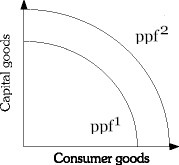If monetary policy is unchanged, the outstanding national debt will increase whenever
A. there is a deficit in the federal budget.
B. Social Security tax receipts exceed Social Security benefit payments.
C. there is a surplus in the federal budget.
D. government tax receipts exceed government spending.
Answer: A
You might also like to view...
Which of the following correctly identifies a difference between taste-based discrimination and statistical discrimination?
A) Taste-based discrimination is observed in the service sector, whereas statistical discrimination is observed in the manufacturing sector. B) Taste-based discrimination is observed in the manufacturing sector, whereas statistical discrimination is observed in the service sector. C) Employers engaging in taste-based discrimination are willing to forego profits, whereas employers engaging in statistical discrimination are trying to enhance profits. D) Employers engaging in statistical discrimination are willing to forego profit, whereas employers engaging in taste-based discrimination are trying to enhance profits.
Suppose a health insurance company notes that almost all of its customers are at a high risk of illness or injury. This is an example of:
A. public information. B. perfect information. C. a thick market. D. an adverse selection problem.
President George W. Bush used part of the budget surplus inherited from the Clinton administration to:
A. fund tax cuts. B. stimulate the economy that was slowing down following the end of the high-tech investment boom. C. increase government entitlement spending. D. both fund tax cuts and stimulate the economy that was slowing down following the end of the high-tech investment boom.
Refer to the information provided in Figure 2.6 below to answer the question(s) that follow. Figure 2.6Refer to Figure 2.6. If the economy is at ppf1, a change in consumer preferences would be shown by a
Figure 2.6Refer to Figure 2.6. If the economy is at ppf1, a change in consumer preferences would be shown by a
A. shift from ppf1 to ppf2. B. movement along ppf1. C. shift from ppf2 to ppf1. D. movement along ppf2.